Media | Articles
Final Parking Space: 1978 Cadillac Eldorado Custom Biarritz Astroroof
We’ve seen a couple of discarded Cadillacs in this series, but both have been controversial 1980s cars (an Allanté and a Cimarron). Today we’ll admire an indisputably iconic Cad that thumbed its nose at gas prices as one of the most unapologetically outrageous personal luxury coupes of the Malaise Era: a seriously optioned-up example of the 1971-1978 Cadillac Eldorado, found in a northeastern Colorado self-service boneyard last week.

This facility, located about an hour’s drive north of Denver, was once the site of the storied Martin Supply. Most of its current inventory is modern stuff, but I’ve found some noteworthy old iron there in recent visits, including a 400k-mile Mercedes-Benz W123, a 1952 Chrysler Windsor, and a 1986 BMW 7-Series.

Cadillac’s use of the Eldorado name goes back to the 1953 model year, when the Marilyn Monroe-grade convertible-only Eldo was introduced. Subsequent Eldorados of that decade were a bit less exclusive, but still seriously opulent machines.

The Eldorado was more of a trim-level designation for Fleetwood-bodied cars than a unique separate model as the early 1960s got rolling, but then came the 1967 model year and the all-new and very radical front-wheel-drive Eldorado. There was no mistaking this car for any other Cadillac!
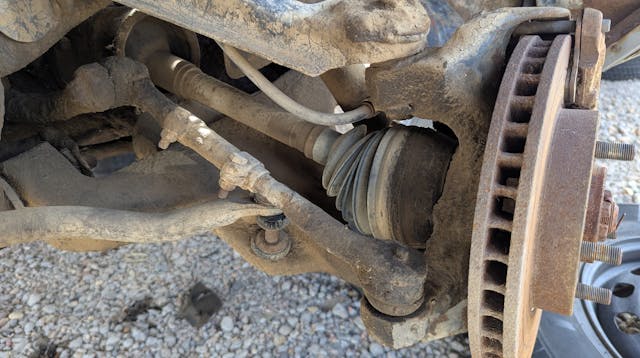
The new Eldorado used the innovative Unitized Power Package that had been introduced on the 1966 Oldsmobile Toronado. This rig used a burly chain to transmit power from the longitudinally-mounted engine to a transaxle assembly mounted against the left side of the engine block. The UPP proved to be amazingly durable over the long haul, so much so that GMC used it in its massive front-drive motorhomes.
Marketplace
Buy and sell classics with confidence

The engine had to be shifted a bit to its right in order to fit the UPP, but there was plenty of room for that in the engine compartment. There’s also a lot of space in front of the engine, especially with the long-snouted 1971-1978 Eldos.
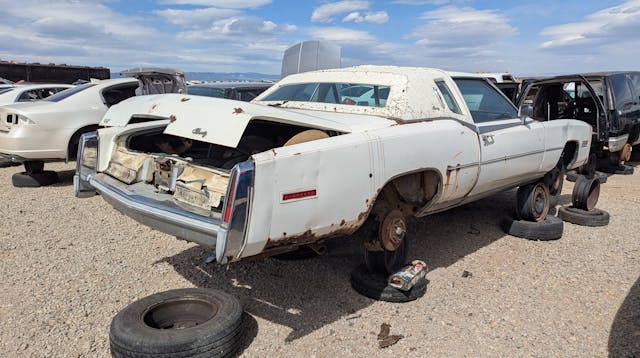
For 1971, the Eldorado remained mechanically similar to its predecessor while getting a longer wheelbase and a more generous application of gingerbread. The mid-to-late 1970s are recognized today as the glory days of ridiculously huge and rococo Detroit luxury coupes, and I don’t want to risk the wrath of Lincoln Mark-loving Sajeev Mehta by stating that the Eldorado was the king of them all (you can judge for yourself, but don’t forget Chrysler’s full-size coupes of the era).

Of course, this car isn’t just any old Eldorado. It’s a Biarritz, a name with a long and complex Cadillac history in its own right. The first Cadillacs to be badged with the name of the French resort city were 1956 Eldorados. Eldorado Biarritzes continued to be built through 1964, after which the name was dropped until its revival in 1976.

The Biarritz package continued to be deployed on the much smaller 1979-1985 Eldorado, best known today for being the car in which Robert De Niro’s Ace Rothstein was blown up in the 1995 film, “Casino.” The final year for the Eldorado Biarritz was 1991.

The final model year for the vast Disco-Era Eldorado was 1978. The easiest way to distinguish a ’78 at a glance is by its one-year-only grille.

This being a Custom Biarritz, it boasts the supremely cushy “Cadillac Contoured Pillow Style Seating.” It’s like driving your living room on the highway!
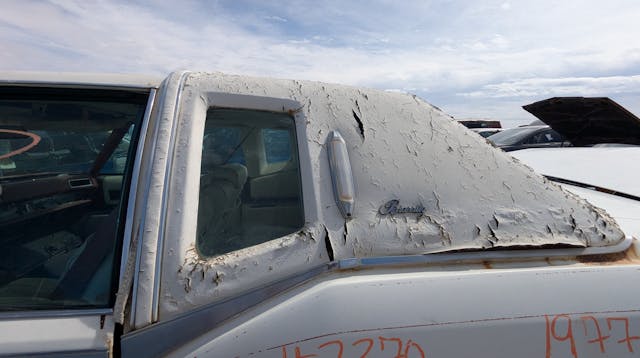
The Biarritz also got opera lights, opera windows, and a padded landau roof with “elegant French seam window treatment.”

If you wanted to look down on your neighbors with ordinary base-grade Eldorados, you needed to pay the extra $2946 ($15,040 in 2025 dollars) for the Biarritz package and the optional Astroroof transparent power sunroof. That’s just what the original purchaser of this car did.

I’m not going to try to add up the price tags on all the options on this car, but its MSRP with the Biarritz Custom Astroroof package was $14,867. That’s about $75,901 in current dollars.
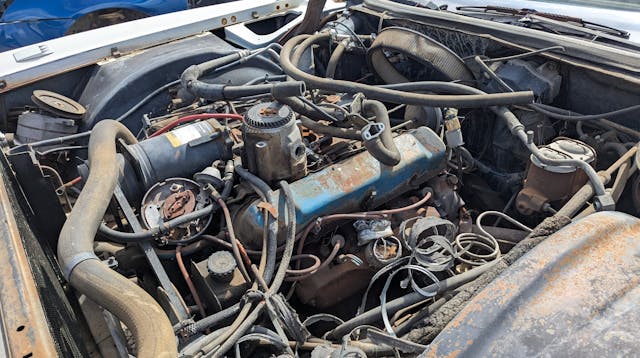
1976 had been the final year for the mighty 500-cube Cadillac V-8 that had powered Eldorados since the 1970 model year. It was replaced with a 425-cubic-inch cousin that shared the stroke of the late-1960s 472.

This engine was rated at 180 horsepower and 320 pound-feet, and the big torque made this car respectably good at off-the-line acceleration despite its 4906-pound curb weight. Obviously, an automatic transmission was mandatory equipment.

Holdrege, Nebraska, is about 350 miles east of this car’s final parking space.



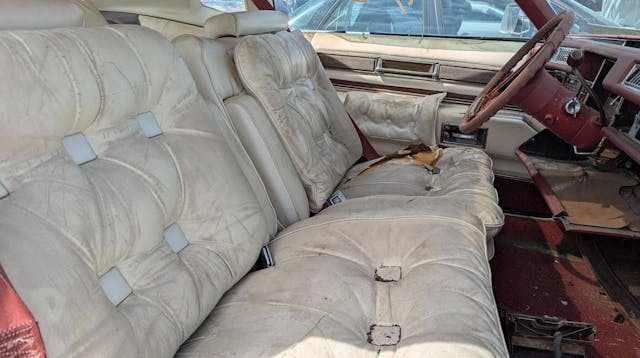
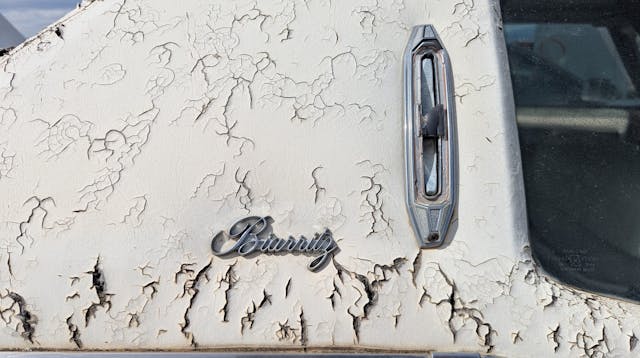
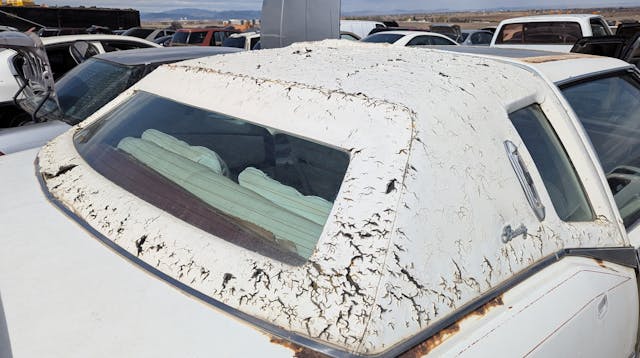



















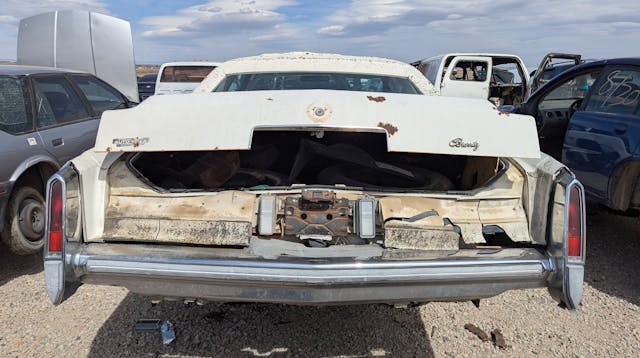




























































The senior partner in my father’s law firm bought a new Eldo every year. That FWD system made these land yachts fairly agile and dependable on snowy Colo roads. My favorite Biarritz was a ’76 (nearly identical to this one, with a stainless steel roof, forward of the padding) driven by the owner of a “gentlemen’s club” near my college campus (a customer of my part time job). He, and this car were real characters, and perfect examples of the disco era excess.
That 70’s era living room couch seating takes the cake for softness.
Chain?!?! Why not heavy-duty CV joints
Chain drive was between engine and transaxle. Both were longitudinally mounted beside each other. Crankshaft and transmission input are parallel to each other and used a chain for one to drive the other. Not really an application for CV joints
1978 Cadillac Eldorado Biarritz. “ A 4- barrel, 7 litre, 2-door, 4,900 lb, FWD luxury roadster “. Utterly beautiful and stunning automobiles that will NEVER be duplicated ! I’ve owned 2 over the years (used) and I still want to get another one! Yeah- either a 1977 or a 1978, the only two years they were built. Basically the only difference was the grill. Best luxury cars of the 1970’s!
That drive train was really was years ahead of its time. And for a 500 inch engine, the package was still pretty compact. The 2.5 liter longitudinally mounted inline 5-cylinder in the Acura Vigor is not really that much smaller.
But the Toronado of ’66-’67 was a much cooler-looking car then the Eldo.